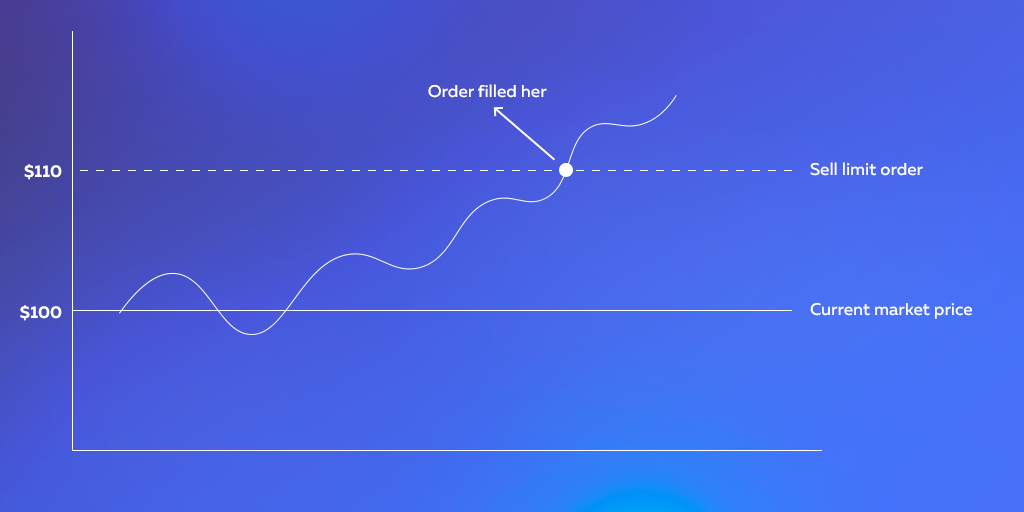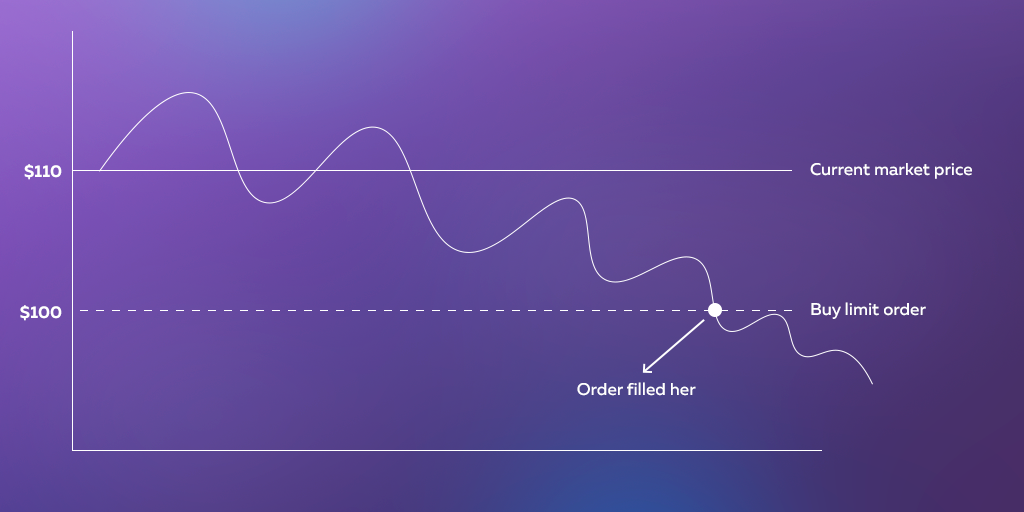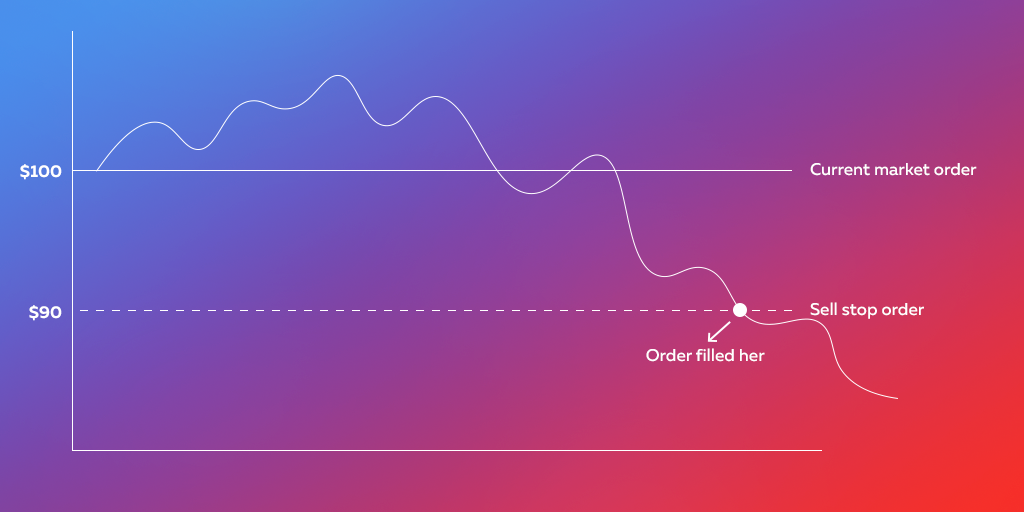Centralized exchanges and brokerage firms may offer investors many trading tools, such as market order, limit order, stop order, and hybrid order. Knowing how and when to use such orders helps investors minimize losses and maximize returns. In this article, we will explain what trade orders are and when and how to employ them in the context of cryptoassets (digital coins and tokens such as bitcoin). However, trade orders can be placed in any market, whether stock, forex, or commodity.
Table of Contents
Market order
A market order is the most basic and the easiest to understand. A market order is placing an order to buy or sell a cryptocurrency immediately.
A sell market order is placing an order to sell your crypto now or on the spot at the current market price, also known as the spot price.
A buy market order is placing an order to buy your crypto at the current market price.
Once you place a sell or buy market order, the trade is executed immediately at the best available spot price.
In a market order, execution is guaranteed, but the price is not. The current market price you see once execution starts may deviate from the price you get when execution ends. A delay even in milliseconds during trade execution may get you a slightly different price from what you had already expected. Such incidents especially happen during rapid price changes or extreme price volatility.
Limit Order
A limit order is placing an order to buy or sell a cryptoasset, such as bitcoin, at a specific desirable preset price in the near or far future.
The near future could mean after a few minutes or even seconds. It depends on how fast the current market price moves towards the preset price and how far apart they are from each other.
On the sell side, a sell limit order is an order to sell a cryptocurrency at a specific favorable price preset above the current market price. Your motive for placing a sell limit order is to sell your crypto higher than the current market price. The price you preset in the sell limit order is the minimum price you are willing to sell your crypto.
Let’s say that you currently own one bitcoin, and the current market price of bitcoin is $100. You decide to place a sell limit order at $110. Over the next few days, the price rises and reaches $110. As a result, the order gets executed. Now your bitcoin is sold at $110, and you made $10 in profit. If the price of bitcoin does not touch $110, the order will never execute.

On the buy-side, a buy limit order is an order to buy a cryptocurrency at a specific desirable price preset below the current market price. Your motive for placing a buy limit order is to buy crypto lower than the market price. The price you preset in the buy limit order is the maximin price you are willing to buy a specific cryptoasset.
Let’s continue with the example we started. The price of bitcoin is still trading at $110 after you sold it. You believe that the price will drop back to $100 and then rise again back to $110 in the upcoming days.
So you decide to place a buy limit order to buy back your bitcoin at $100. The order will not execute until it drops to your pre-specified price of $100. If the price drops to $100, the order goes through.

Unlike market order, the preset price of a limit order is guaranteed, but the execution is not. The limit order will only execute at the predetermined price or better. If the current market price doesn’t cross the preset price, the order will never execute.
To conclude, you place a limit order to buy below the current market price or sell above it.
Limit order = placed to buy lower than the current market price or sell higher than the current market price
Buy limit order = placed to buy at a more desirable price than the current market price.
Sell limit order = placed to sell at a more desirable price than the current market price.
Stop order
This order type is more common and the easiest to understand on the sell-side but less common and more confusing on the buy-side.
Stop order, also called a stop-loss order, is an order to buy or sell an asset at a specific undesirable preset price in the future. The question you may ask is: why would anyone sell or buy at undesirable prices?
Think about it. In an already hot and trending market, you would be willing to buy at a higher market price to ride the upward trend and advance your gains. In a declining market, you would sell your asset at a lower market price to exit the market and cut losses short. Therefore, a trader may buy and sell at a less favorable price to advance his gains or avoid further losses.
Sell stop order is an order to sell a cryptoasset at a specific unfavorable price preset below the current market price. This order helps traders avoid further losses shall the price continues to decline below the level they set. If this is still confusing, an example will help.
Let’s say you own one bitcoin trading now at $100. You are not sure whether the price will go up or down. However, you are optimistic the price will rise in the near future. But you are also concerned that it will decline on a downward trend. After analyzing the price chart, you decide to place a sell stop order and set the price at $90.

Let’s say your optimism turned out to be wrong, and hence the price started to decline to an all-time low of $70. Since you placed a sell stop order at $90, your broker sold your bitcoin at this price. You ultimately lost $10, but the sell stop order saved you a potential loss of $20.
So when the price touched the $90 mark, your order was executed. While execution is guaranteed, the price is not. Like a market order, if the current market price is volatile, the sell stop order may execute at a less favorable price than what you had previously set. In our example, if the market price was dropping rapidly, getting a price lower than $90 would have been possible.
Buy stop order is an order to buy a cryptoasset at a specific unfavorable price preset above the current market price to advance gains on an upward trend.
The price of an asset, such as stock or cryptocurrency, sometimes moves on a continued upward trend. As a trader, you don’t want to miss out on it. Investors place a specific price preset above the current market price to confirm the upward trend. So by placing a buy stop order, you are telling your broker or exchange platform to buy once the market price reaches your preset price.
Let’s demonstrate by example. You would like to buy one bitcoin, and the price of bitcoin is currently trading at $100. You believe that if the price touches $110, it will confirm an upward trend. So you decide to place a buy stop order at this price to ride the upward wave and eventually sell your bitcoin at a higher price.

After your order gets executed and you buy at $110, you may place another sell limit order at $130 because you believe the trend will end at this price level. I hope by now you can tell the difference between limit orders and stop orders.
Buy stop order is more used by traders who short sell a stock, cryptocurrency, or any other asset. Short selling is a more advanced and riskier trading strategy that involves borrowing an asset and trading it on margin. It allows the investor to profit from the price decline of the borrowed asset.
However, if the price of the asset rises, the investor starts to lose money. To cut further losses shall the price continues to increase, the investor places a buy-stop order at an undesirable price preset above the current market price to exit the market. To learn more read: shorting stocks and cryptocurrencies.
To conclude, in a stop order you buy at a premium and you sell at a loss. It is helpful to compare this to a limit order where you buy low and sell high. In both orders, prices are preset and realized in the future.
Hybrid order (stop limit order)
A hybrid order is placing a combination of stop and limit orders at once. Hence, it is called limit/stop order.
In this order, you must preset two specific prices, one for the buy limit order and another for the buy stop order. Both must be set in advance above the market price. You can choose between two combinations, depending on the goal you would like to achieve as follow:
- Buy limit order and buy stop order
- Sell limit order and sell stop order
Let’s take the first scenario: buy limit order and buy stop order
You are currently shopping for one bitcoin, and the price of bitcoin is currently trading at $100. As a trader, you see that the price is trending upward, and you are willing to buy it for a premium at $110 to confirm an upward trend and bank on it.
However, instead of placing a buy limit order and eventually paying $110, you decide to place a buy stop limit order. You set the buy stop order price at $110, then you set the buy limit order price below it at $108, for example.

The way the broker will read this order is as follow:
If the price reaches the buy stop order of $110, then activate the buy limit order. Then If the price drops back to the buy limit order of $110, then execute this order by buying at $108.
This way you hit two birds in one stone. You confirmed the trend at $110 and bought your bitcoin at the lower price of $108. If all goes as planned, the price should bounce back up and cross $110 and eventually sell at profit at the peak of the trend.
In a sell limit stop order, you believe that the price is dropping, so you set your sell stop order at, let’s say, $92, and you set the price of your sell limit order lower at $90.
The broker will read this order as follow:
If the price drops to $92, then activate the sell limit order. Then If the price drops further to $90, then execute by selling at or no less than $90.









